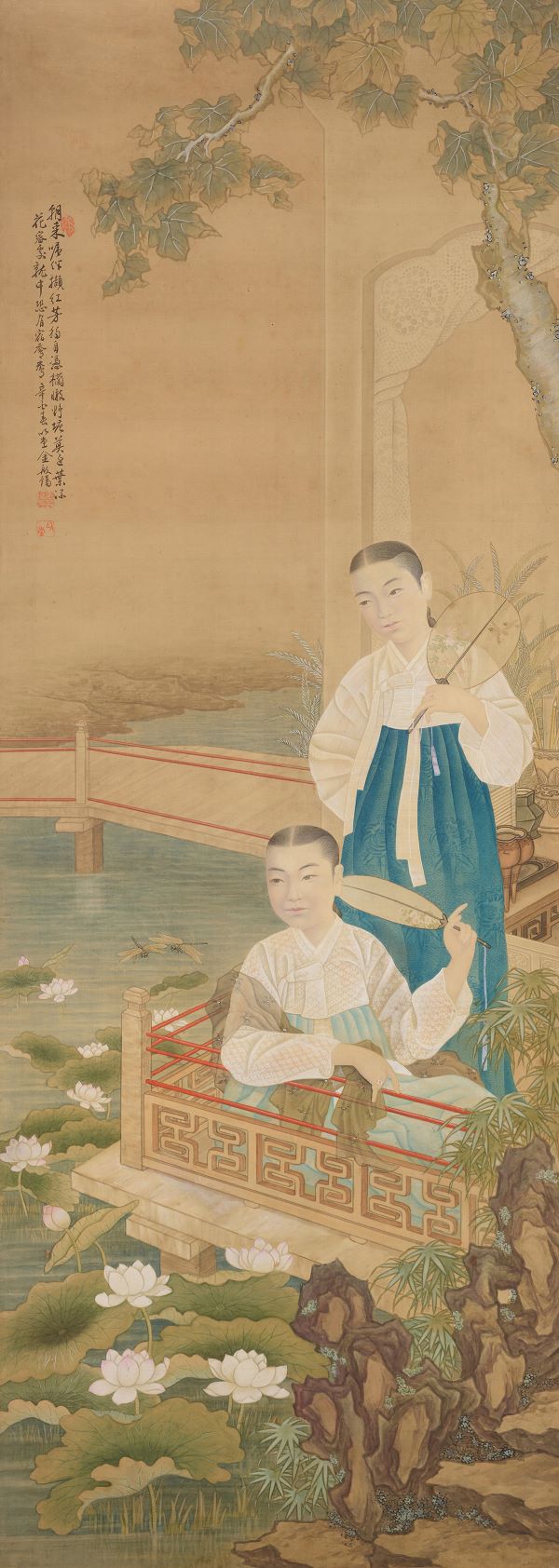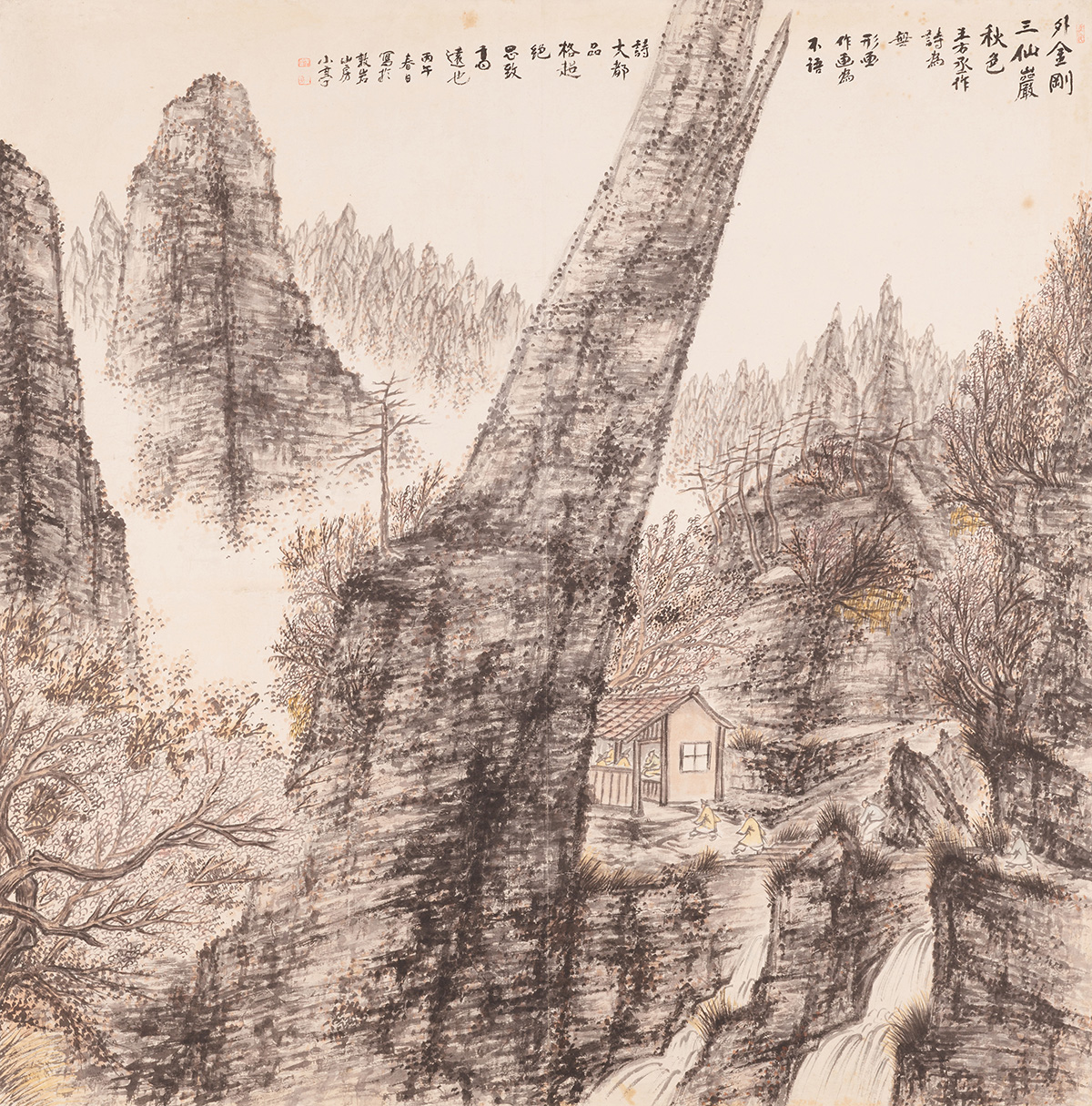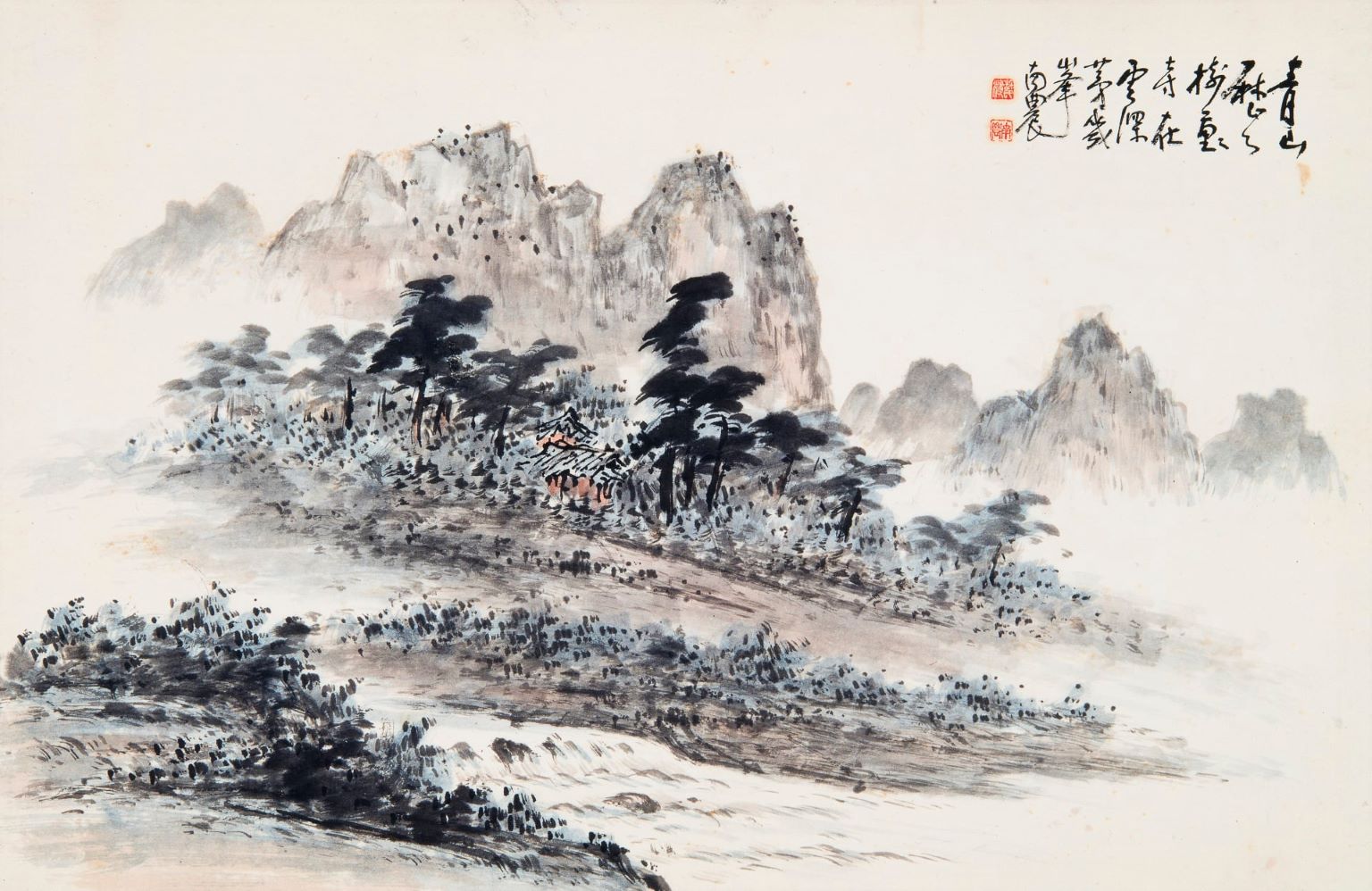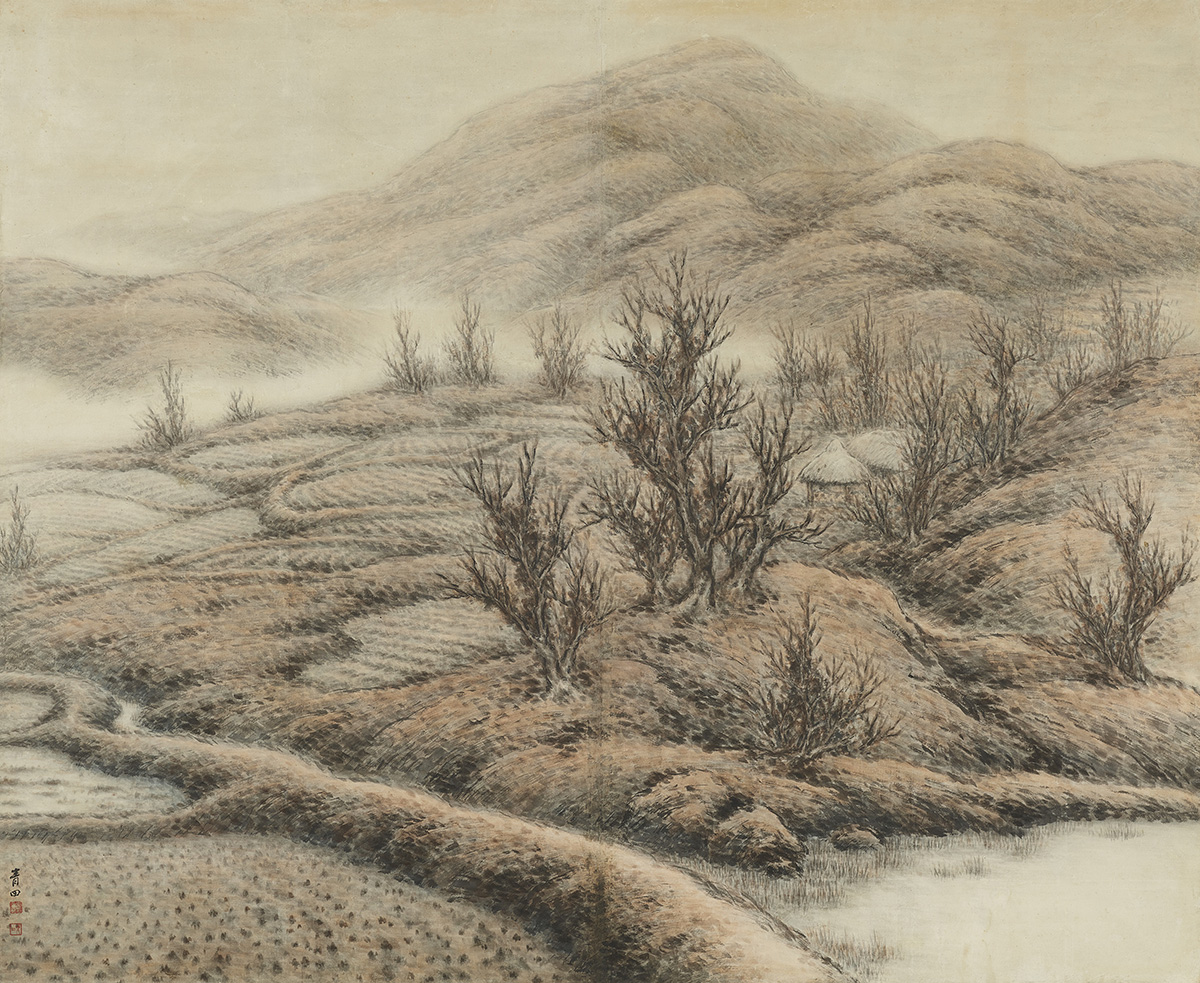
Six Eastern Painters Exhibition, Brochure, 1971, MMCA Art Research Center Collection
Six Masters of Eastern Painters
* Source: Multilingual Glossary of Korean Art. Korea Arts Management Service
Related
-

Huh Baeklyun
Huh Baeklyun (1891-1976, pen name Uijae) learned Chinese classics from Jeong Manjo, who was in political exile in Jindo. His education began from Hoe Hyung, a son of Hoe Ryon in 1911. Later, he studied law, but quit in 1917 in order to be trained by Komuro Suiun. In the spring of 1920, he held a return exhibition at the Mokpo convention center, and his Fall Landscape won second prize at the first Joseon Art Exhibition [Joseon misul jeollamhoe] in 1922. From the seventh exhibition, he focused on creating paintings independently and stopped submitting work to the Joseon Art Exhibition. In 1938, he organized Yeonjinhoe in Gwangju and fostered local artists, such as Jeong Unmyeon, Ku Cheolu, and Heo Haengmyeon. He became a strong presence as a modern landscape painter through The Ten Landscape Painters Exhibtion organized by Oh Bongbin in 1940. In 1949, he became a Noteworthy Artist, Invited Artist, and judge at the National Art Exhibition (Gukjeon) as well as a member of the National Academy of Arts, Republic of Korea. He studied traditional Namjong painting that emphasized the literati spirit through forms such as Wangyu, Soshik, and Mibul. He played a pivotal role in establishing the Gwangju art community which highlighted traditional Eastern painting during the Japanese colonial period.
-

Kim Eunho
Kim Eunho (1892-1979, pen name Yidang) joined the Calligraphy and Painting Society (Seohwa misulhoe) in 1912 and learned Oriental painting under An Jungsik and Cho Seokjin. He was known for his sophisticated brush strokes and attention to detail. Early in his career he was appointed as a court portrait painter. He produced several portraits of kings from the Joseon dynasty and gained a reputation for his portraits and colored figure paintings. He contributed his works to the first exhibition of the Calligraphy and Painting Association (Seohwa hyeophoe) and the Joseon Art Exhibition. His trainees organized Husohoe in 1936, which contributed enormously to the Modern Oriental Art community in Korea. However, he was accused of pro-Japanese activities due to his overt acquiescence to Japanese Imperialism and his involvement in its wartime propaganda. He tried his hand at ink paintings in the 1950s and experimented with modernized colored landscape painting from the 1960s into his later years. In the 1960s, he painted several portraits of historic figures and published Hwadanilgyeong (1968) and Seohwabaeknyeon (1977).
-

Byeon Gwansik
Byeon Gwansik (1899-1976, pen name Sojeong) was born in Ongjin, Hwanghae-do. He was a grandson of the last painter of the Joseon royal family, Sorim Cho Seokjin. He attended the Calligraphy and Painting Society [Seohwa Misulhoe] in 1917 when he turned 18. In 1923, he tried to organize Dongyeonsa with Lee Yongwoo, No Soohyeon, and Lee Yongwoo to look for harmony between old and new styles, but Dongyeonsa was disbanded the following year due to financial difficulties. In 1925, he moved to Japan with Kim Eunho and sat in on classes at the Tokyo School of Fine Arts. There, he developed a new style called Shinnamhwa that incorporated Nambukjong style with western painting techniques. After his return to Korea in 1929, his last official activity was to submit his work to the Joseon Art Exhibition [Joseon misul jeollamhoe]. He left Seoul in 1937 to focus on his art exploring diverse landscapes in Korea. He uniquely depicted Korea landscapes in his painting by using multiple ink-application painting method, broken line method, and unconventional compositions. His representative works include Farm Village (1957), Muchangchunsaegdo, and Oegeumgangsamseonamdo (1970).
Find More
-

Eastern painting
Eastern painting (dongyanghwa) refers to the overall body of works created using traditional East Asian materials and methods, in contrast to Western painting. In Korea, Byeon Yeongro’s essay “On Eastern Painting” published in Dong-A Ilbo on 7th, July, 1920 was the first use of the term. The term then began to be used in Japan first to distinguish Oriental style paintings from Western ones. Until the late Joseon era, both calligraphy and painting were categorized under the term seohwa, but during the Japanese occupation of Korea in 1922, the first Joseon Art Exhibition [Joseon misul jeollamhoe] divided the painting section into Western and Eastern styles. Thereafter, the term Eastern-style painting entered official use in the country. After independence, the National Art Exhibition (Gukjeon) continued to use the term “Eastern painting,” but since 1970, numerous arguments were made to replace it with "Korean painting," because the term was imposed unilaterally during the Japanese colonial era.
-

Lee Sangbeom
Lee Sangbeom (1897-1972, pen name Cheongjeon) learned painting from An Jungsik and Cho Seokjin at the Calligraphy and Painting Society [Seohwa misulhoe] and graduated in 1918. He became a member of the Calligraphy and Painting Association [Seohwa hyeophoe] founded in 1918 and submitted his work to the first Joseon Art Exhibition [Joseon misul jeollamhoe] in 1922. He repeatedly won special prizes and was appointed as a Noteworthy Artist and Participating Artist of Eastern painting in the Joseon Art Exhibition. In 1920, he participated in the Changdeokgung Palace mural project and created the work Samseongwanpado. He founded the Cheongjeon Art Studio to educate art students in 1933 and gained notoriety by contributing illustrations to serialized pro-Japanese newspaper novels. After independence, he was accused of being pro-Japanese, but continued to focus on his art nonetheless, becoming an important figure in art circles. In the 1950s, he created his own original ‘Cheongjeon’ style. This Korean-style landscape ink wash painting was based on real Korean scenery and represented what many consider as the essential aesthetics of Korean landscape painting. While he consistently participated in the National Art Exhibition (Gukjeon), he never hosted a solo exhibition of his own, and in terms of his teaching in the post-independence period he taught as an art professor at Hongik University.
-

No Soohyun
No Soohyeon (1899-1979, pen name Shimsan) learned painting from An Jungsik and Cho Seokjin at the Calligraphy and Painting Society (Seohwa misulhoe) and graduated in 1918. In 1920, he participated in a series of decorative paintings at Changdeokgung Palace, and the resulting mural of Joilseongwando is his work. In 1923, he co-founded the art group Dongyeonsa with Lee Yongwoo, Lee Sangbeom, and Byeon Gwansik. Even though this group attempted to explore new, non-traditional possibilities for Eastern painting, their association did not last long. During the 1920s, he participated in the Joseon Art Exhibition [Joseon misul jeollamhoe] and was the first artist to contribute editorial cartoons to the Choson Ilbo from 1924 to 1927. In the 1930s, he stopped participating in the Joseon Art Exhibition. Instead, he dedicated himself to exploring landscape painting based on his real experience of scenery and later established a new landscape painting style that incorporated the motif of oddly formed rocks and strangely shaped stones. Mountain Village (1956), Gyesanjeongchwi (Atmosphere of Valley and Mountain) (1957), Hongyeam (1961), and Paradise (1968) are considered his most representative works. He served as a judge and editorial board member of the National Art Exhibition and educated a variety of contemporary Eastern-style painters as an art professor at Seoul National University.






